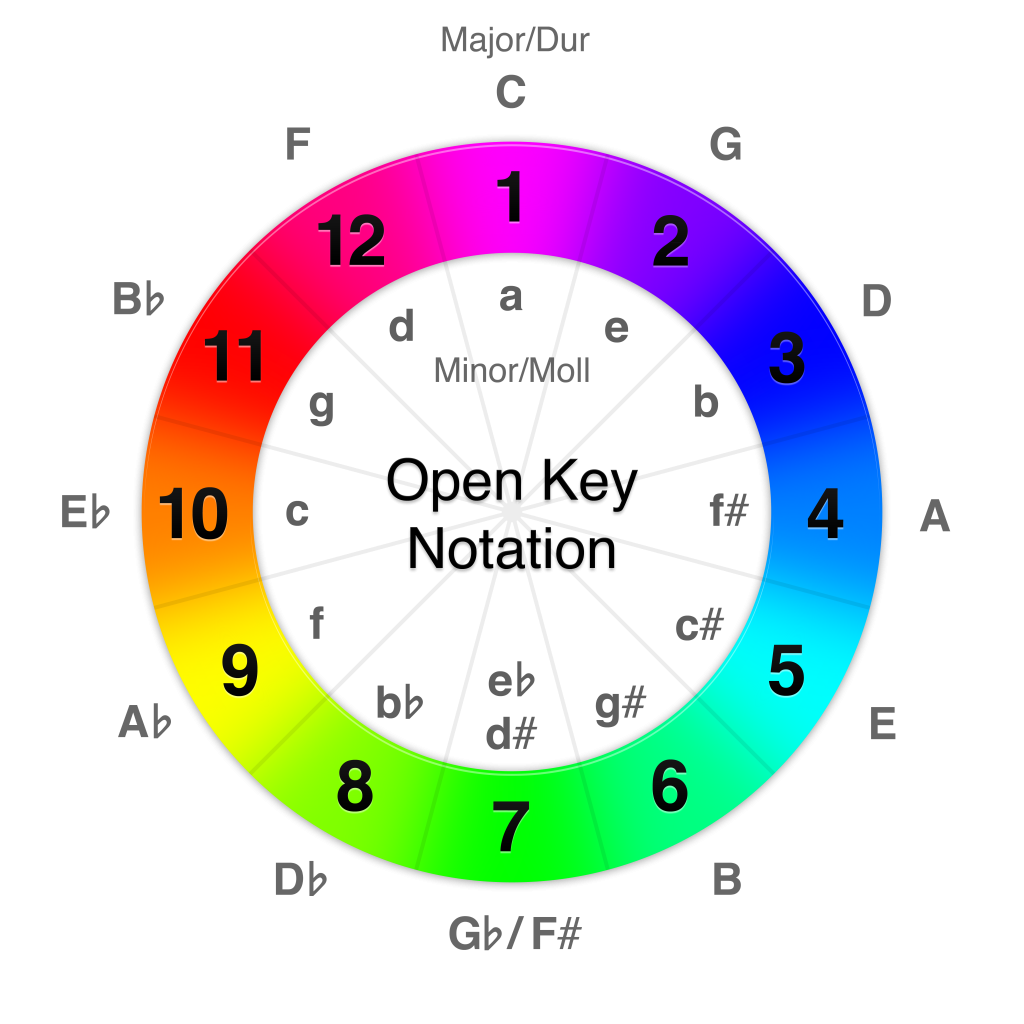Smooth transitions are the key to keeping the energy flowing and the crowd engaged. But it’s not just about beatmatching and timing — it’s also about harmonic mixing. Harmonic mixing is a powerful technique that involves matching the keys of different songs to create a more cohesive and harmonious blend.
What is Harmonic Mixing?
Harmonic mixing is the practice of selecting and blending songs that are in compatible musical keys. In simpler terms, it’s about making sure that the notes of the songs you’re mixing complement each other, rather than clash. Just like when you pair a red shirt with matching pants, harmonic mixing creates a sense of harmony in your set, making sure the musical elements “fit” together.
By understanding the key of a track and how different keys relate to one another, you can ensure that your transitions don’t sound out of place. Instead of mixing two songs that sound dissonant or awkward when played together, harmonic mixing allows you to seamlessly blend tracks in a way that feels natural.
The Circle of Fifths: Your Harmonic Compass
One of the most essential tools for harmonic mixing is the Circle of Fifths. The Circle of Fifths is a visual representation of all the musical keys and how they relate to one another. It’s like a map of the musical landscape, helping you navigate through different keys and find ones that are compatible with each other.
In the Circle of Fifths, each key is connected to the next by perfect fifth intervals. These intervals are fundamental to Western music and create a smooth, pleasant sound when transitioning between them. If you start from any given key and move clockwise, you’ll discover that the adjacent keys are harmonically compatible. Moving counterclockwise, you’ll encounter keys that are also harmonious, but with a slightly different flavor.

This means that you can confidently mix songs in neighboring keys or even in the same key to maintain a sense of harmony throughout your set. The Circle of Fifths provides a simple and effective guide for harmonic mixing that takes the guesswork out of key selection.
How to Use the Circle of Fifths in DJing
Most DJ software these days has built-in key detection, so you can easily see the key of each track you’re playing. To begin with harmonic mixing, try these steps:
- Identify the Key: Use your DJ software to find the key of each song you want to mix. Most programs display the key in standard notation (e.g., C Major, G Minor) or Open Key notation (e.g., 8 for C Major, 5 for G Minor).
- Find Compatible Keys: Once you know the key of a track, refer to the Circle of Fifths to see which other keys are nearby. For example, if your track is in C Major (Open Key 8), you could mix it with F Major (Open Key 7) or G Major(Open Key 9) for a smooth transition.
- Use Relative Keys: In addition to neighboring keys, you can also mix a track with its relative minor or major. For example, if you’re in C Major (Open Key 8), you can mix it with A Minor (Open Key 8 minor) because C Major and A Minor are relative keys.
- Experiment with Key Changes: If you want to introduce more dramatic shifts in your set, try mixing songs that are a few steps apart on the Circle of Fifths. Just keep in mind that larger key changes can be more noticeable to the listener, so use them sparingly for a smooth experience.
Drum Beats and Key Compatibility
While harmonic mixing focuses on matching keys, drum beats play a critical role in the overall mix. The rhythm and timing of the drums help to create the foundation of the track, and when mixed correctly, they provide a steady backbone for the harmonic elements to sit on top of. Matching drum beats across songs is just as important as matching keys, especially when you’re creating seamless transitions.
Always make sure that the drum patterns of the tracks you’re mixing are in sync. Even if you’re mixing songs in compatible keys, a mismatch in the drum rhythms can disrupt the flow of the mix and cause tension in the music. Be sure to pay attention to the kick drums and the overall groove of the songs to ensure that the rhythm remains steady.
Building Your Set with Harmonic Mixing
Now that you have a basic understanding of harmonic mixing, the next step is to apply it to your DJ sets. Here are a few tips to help you build a harmonically balanced and energetic set:
- Start with Songs in the Same Key: To ease into your set, start with songs in the same key to establish a smooth, continuous vibe. This will allow the crowd to become accustomed to the energy you’re creating before introducing key changes.
- Incorporate Key Changes: Once you’ve established a groove, you can gradually introduce key changes that move around the Circle of Fifths. If done thoughtfully, these transitions can create a sense of progression and keep the energy flowing.
- Use the Drum Beat as Your Anchor: While you’re focused on harmonic mixing, don’t forget about the importance of the rhythm. Ensure that your drum beats are aligned and steady, so even if you change the key, the crowd will still feel grounded in the music.
- Experiment and Trust Your Ear: Harmonic mixing isn’t just about following rules — it’s also about creativity. Trust your ear and experiment with different key combinations to see what works best for the mood of the crowd.
The next time you’re preparing your DJ set, remember: by mixing in key and paying attention to the rhythm of the tracks, you’re not just creating music — you’re crafting a sonic journey that will captivate and energize your audience. Happy mixing!
Add a Comment